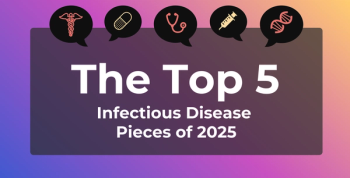
Rising Incidence of Young-Onset Cancer: Causes and Generational Risk Factors
At ESMO Congress 2024, Shuji Ogino, MD, PhD, MS, explained that the rising incidence of young-onset cancer may be due to generational risk factors such as lifestyle, diet, and environmental changes, emphasizing the need for long-term research and follow up to understand early-life influences on cancer development.
Incidence of young-onset cancer is rising, with an 80% increase since the 1990s, explained Shuji Ogino, MD, PhD, MS, chief of the Molecular Pathological Epidemiology program at Bigham & Women’s Hospital, professor of pathology at Harvard Medical School, professor (epidemiology) at the Harvard TH Chan School of Public Health, and clinical research professor at American Cancer Society. During a keynote presentation at the
Young onset is a newer term in cancer care that has only recently been defined by the American Association for Cancer Research, American Society of Clinical Oncology, and ESMO as below the age of 50 years, explained Irit Ben-Aharon, MD, PhD, director of the Fishman Oncology Center at Rambam Health Care Campus, during the ESMO session. Before use of young onset, the term adolescent and young adults (AYA) was more traditionally used in cancer care, with AYA referring to ages 20 to 39 years. Data from the Surveillance, Epidemiology, and End Results Program from 2010 to 2016 show that 5% of cancers diagnosed were among AYAs, with 5-year relative survival at 84.6% for this population.
“In a recent publication in The Lancet Public Health, we can see that there are differences in cancer rates among adults throughout the 20th century with regard to the year of birth, and we can see that among younger people born in later generations, the risk of developing cancer has increased tremendously,” Ben-Aharon said during the session. “There are 12 cancer types that [show] this increase in the young-onset population, and half of them are in the gastrointestinal [GI] tract.”
According to Ogino, the majority of young-onset cancer incidence relating to the GI tract is obesity related, suggesting the importance of diet and the microbiome in the development of these cancers.
“This is just the tip of the iceberg, and I believe what’s hidden under the water is many other chronic diseases are [becoming] epidemic. I think we are already seeing some signs [of this],” Ogino said. “As young people get older, we will see many more cancers unless we [develop] a prevention mechanism.”
For example, there has been an increasing incidence of CRC since the 1990s, explained Ogino. However, there was already growing incidence of all age CRC since the 1950s, which Ogino noted raises the question of the 40-year gap between rising incidence of CRC in the 1950s and the increased rate of young-onset CRC in the 1990s.
“One interesting phenomenon here is the birth cohort effect, which really means, in this setting, that newer birth cohorts have higher early-onset CRC risks,” Ogino said. “Is the 1950s a turning point of something, or is this just a coincidence? I think there are scientific reasons [for this change].”
According to Ogino, lifestyle, diet, and environment changed globally starting after World War II. People started to become wealthier, society was more industrialized, and foods became more heavily processed.
“People were exposed [to these changes] generation wide, and then the adults [later on] started having CRC,” Ogino said.
Ogino explained further that people born during the 1950s were too young to have CRC, so it took decades for these children to grow older and develop the disease.
“It took about 40 years, so that can explain the timeline between the epidemic of old-age CRC and early-onset CRC, because adults have a much shorter timeline,” Ogino said. “The new birth cohort has unique risk factor distributions within generations, and that can probably lead to a higher CRC risk.”
One of the challenges with assessing generational changes in risk factor distribution is that much of the research today is focused on more recent trends. However, according to Ogino, it is important to look at the entire life course to accurately assess generational changes and understand the causes of early-onset CRC.
“Studying more recent factors may be good, but is not good enough,” Ogino said. “When considering the life course, true risk factors may be something like diet, lifestyle, and environment changes [that lead to] obesity in adults. So maybe not obesity itself, but [instead] the changes that [have resulted in] obesity… Unless we analyze all these early life factors, we [will not] know the magnitude of effect of obesity.”
Ogino noted that even though a treatment is now available for obesity, if obesity is not the root cause of cancer development, an obesity treatment may not have any impact on cancer prevention.
To support further understanding of early-life factors that may lead to cancer development, Ogino noted that research among pediatric populations is important. However, the study of early life stages is quite challenging, according to Ogino. For that reason, it is more feasible to use existing pediatric cohorts for assessment of these factors.
“There are great studies [of pediatric cohorts] out there, and some of [these patients] are now adults,” Ogino said. “Something like [using] UK world cohort studies—those are great resources we should leverage. The challenge is we don't interact a lot between pediatric researchers and adult cancer researchers.”
Ogino noted that it would be valuable to conduct a decades-long study to effectively assess generational changes, but funding for lengthy research can be a challenge.
“If we get results 3 or 4 decades later, probably no funder will support us [for this type of research],” Ogino said. “Decades later, we maybe are already dead, but we [could] leave a legacy. But we often do not want to get data decades later, [as researchers], so that is also a challenge we have to overcome.”
Ogino noted that the collection of biospecimens throughout patients’ life course could be an answer to this challenge. Another potential resource in the United States are electronic health records (EHRs), which could be utilized to assess information regarding risk factors for cancer development throughout the life course. To aid with the assessment of extensive data from nationwide EHRs, artificial intelligence (AI) may play a valuable role, according to Ogino.
“We now have early-life EHRs we should utilize, and possibly AI can do a great job. Also, causal inference in epidemiology may play a role as well,” Ogino said. “I keep saying existing child cohorts—they already have all these data, they just don't have a follow-up yet. So we can actually collaborate with them to do an ideal study, and then also we can get tumor and normal tissue for analysis, which can give us a great clue.”
Reference
Ogino S, Ben-Aharon I. The emerging global epidemic of young age- onset cancer: mature or nurture? Presented at: ESMO Congress 2024; September 13-17, 2024; Barcelona, Spain;
Newsletter
Stay ahead of policy, cost, and value—subscribe to AJMC for expert insights at the intersection of clinical care and health economics.








































